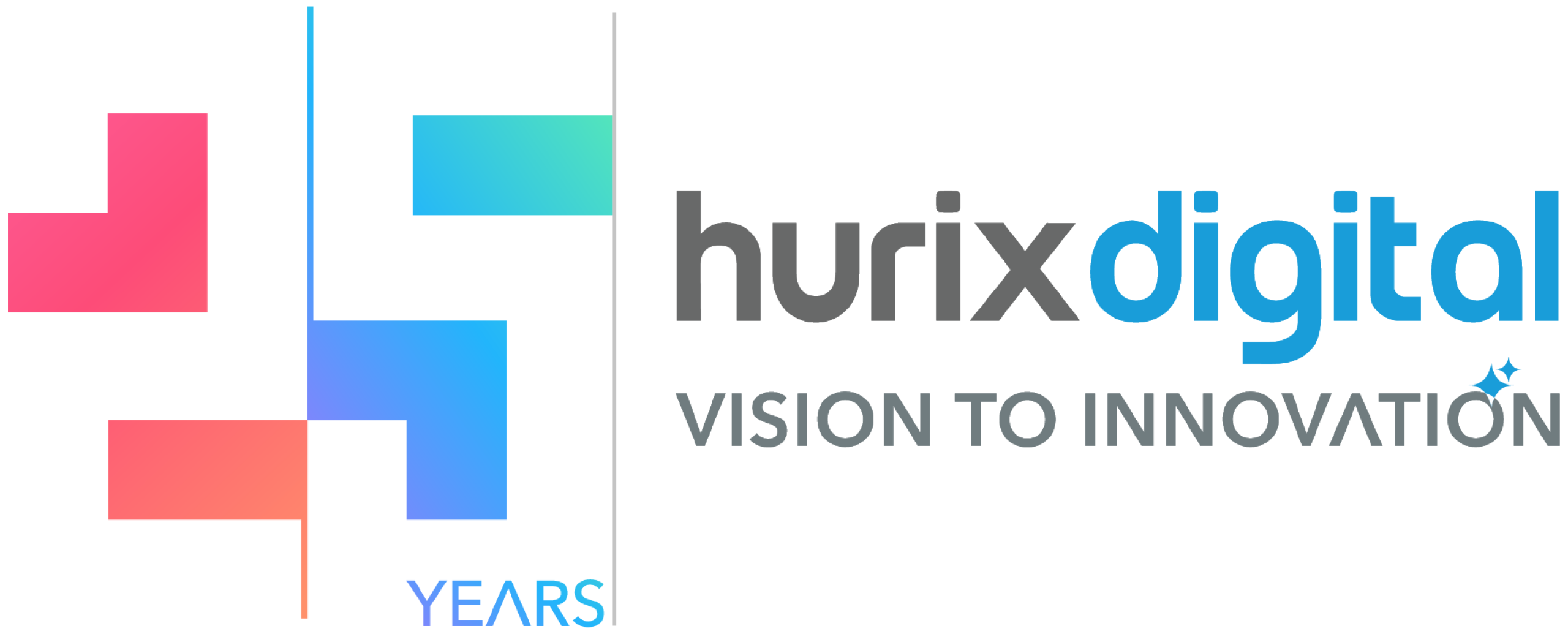
Gokulnath B
September 10, 2025
How Can Leaders Ensure Reliable AI Data Insights?
Many executives at education technology firms say they want to be “data-driven.” Hurix Digital has heard this line many times. Still, dashboards proliferate, random pilots sprout, and people argue about tools while straightforward questions linger unanswered.
This blog tackles ten thorny questions around AI data insights that board members, product heads, academic partnership leads, and operations chiefs quietly raise. It is framed so that a seasoned leader can find depth while a curious newcomer can follow the thread. No mystique, no buzzword fog. Real practice.
Table of Contents:
- How to Ensure Reliable AI Data Insights for Strategic Decisions?
- What is the True ROI of Investing in AI Data Insights?
- How Can We Build an AI-Ready Data-Driven Organizational Culture?
- What are the Best Practices for Integrating AI Insights into Existing Systems?
- How Do We Mitigate Ethical Risks and Biases in AI Insights?
- How to Secure Sensitive Data While Leveraging AI for Insights?
- How Can AI Data Insight Initiatives Scale Across the Enterprise?
- How Do AI Data Insights Provide a Sustainable Competitive Advantage?
- What Key Metrics Measure the Effectiveness of AI Data Insights?
- What Emerging AI Data Insight Trends Should Leaders Prioritize Next?
- A Final Word
How to Ensure Reliable AI Data Insights for Strategic Decisions?
Reliability rests on lineage, clarity of definitions, disciplined freshness, and ruthless reduction of noise. People talk about “single source of truth” then export CSVs, tweak them offline, and circulate contradictory numbers. That erodes belief more than a model error ever will. So step one: a canonical data dictionary that product, academic services, sales enablement, and finance actually accept. Every core metric needs: name, owner, formula, grain, and exception handling rule. Rather than settling disagreements ad hoc, they settle them within their dictionary. Second pillar: data quality scoring that is visible like a weather forecast. Leaders should see, beside each weekly metric, small companion indicators: completeness %, duplication rate, late-arrival count, anomaly flag. A number without a quality badge is a half-truth. Quality scoring can start simply:- Timeliness: Records arriving within the agreed window
- Consistency: Proportion passing validation rules
- Integrity: Foreign key joins succeeding
- Drift: Statistical divergence vs rolling baseline
What is the True ROI of Investing in AI Data Insights?
ROI calculations for AI insights often miss the point entirely. Vendors showcase percentage improvements and efficiency gains, but educational institutions need a more nuanced understanding of value. Technology alone can’t provide a true return, because decisions must be made differently, students need to be treated better, and resources must be allocated more wisely. One of our community college clients tracked their manual processes before implementation. Academic advisors spent 15 hours weekly compiling reports, identifying at-risk students through spreadsheet analysis, and creating intervention lists. The work was valuable, but it consumed time that could have been spent on direct student interaction. Worse, the manual process introduced two-week delays between problem identification and intervention. By then, struggling students had often fallen further behind. Indirect returns are often greater than direct benefits, but they are more difficult to measure. Teachers who possess early warning signs regarding struggling students can alter their methods before problems occur. This active support promotes classroom behavior, decreases teacher ire, and creates beneficial learning environments. How do you price teacher satisfaction or student confidence? These intangibles drive long-term institutional success even if they don’t appear on balance sheets. Time’s release represents a unique type of return. When AI is involved in pattern recognition and initial assessment, professionals concentrate on interpretation and application. A previous day’s labor of love now involves improving student services. Department heads transition from dealing with reactive problems to proactive planning. This reallocation of human intelligence from simple analysis to creative solutions to problems increases the effect across the organization.How Can We Build an AI-Ready Data-Driven Organizational Culture?
Many culture decks preach curiosity, then bury analysts under ad hoc slide requests. An AI-ready culture does three humble things repeatedly: First, it normalizes asking for evidence without theatrics. A product director can reply to sweeping claims with “Show the learner segment breakdown behind that average,” and nobody feels attacked. That conversational norm gets codified through internal writing guidelines: every feature pitch doc includes a “current behavioral evidence” section with links to reproducible queries. Second, it makes basic literacy universal. People should grasp the difference between correlation and causal inference, sampling bias, class imbalance, and seasonality. Offer short internal clinics tied to concrete edtech scenarios (“Why average session length misleads for asynchronous study modules”). Third, it removes friction for self-service while keeping governance guardrails. Provide governed semantic layers so a customer success manager can pull institutional health scores without raw SQL spelunking. Add a lightweight peer review channel: before a figure enters an executive doc, a second analyst signs off that logic matches the definition. Low drama, high trust. Small signals compound. Over time, appeals solely to authority lose power relative to appeals paired with a data narrative. Yet avoid fetishizing numbers. Encourage each dashboard tile to carry a short human explanation: “Drop in assessment submissions coincided with LMS outage window (see incident log).” That textual layer keeps empathy alive.What are the Best Practices for Integrating AI Insights into Existing Systems?
Integration nightmares kill more AI projects than bad algorithms ever will. Picture this common scenario: an organization buys cutting-edge AI software that generates brilliant insights. Dashboards display these insights, but no one looks at them because they require logging into yet another system. However, the actual work is still done in email threads and spreadsheet attachments! Successful integration means meeting people where they already work. If sales teams live in their CRM, AI insights must appear there, not in separate analytics portals. At our behest, one of our tech clients embedded AI recommendations directly into its support ticket system. Instead of agents switching applications to check suggested solutions, relevant answers appeared automatically as they typed responses. Usage went from 10% to 80% overnight—same AI, different delivery. APIs and middleware sound boring, but they determine success. The coolest AI platform becomes useless if it can’t pull data from legacy systems or push insights to operational tools. A healthcare network spent months building sophisticated patient risk models that couldn’t talk to their scheduling system. Doctors received lists of high-risk patients but couldn’t automatically prioritize appointments. The technical integration took three weeks; they’d wasted six months avoiding it. Gradual rollout beats big bang implementation. Start with read-only integration where AI insights supplement but don’t alter existing workflows. Let users grow comfortable seeing AI recommendations alongside familiar data. Then enable simple actions like clicking to accept an AI suggestion rather than manual entry. Finally, allow automated actions with human override options. This progression respects both system stability and human psychology.How Do We Mitigate Ethical Risks and Biases in AI Insights?
A bias in AI is like carbon monoxide: invisible, odorless, and potentially fatal. A recruiting firm’s AI screening tool rejected 70% of female applicants for technical roles. The system wasn’t programmed to discriminate; it learned from a decade of hiring data that reflected historical biases. They discovered this only after a rejected candidate happened to be a lawyer’s daughter. The first step requires acknowledging that all data contains bias because all human decisions contain bias. Historical data reflects past prejudices, measurement choices embed assumptions, and even defining success carries cultural weight. A university’s retention prediction model flagged first-generation college students as high dropout risks. Technically accurate based on historical patterns, but using it to allocate resources would have perpetuated the very inequalities education should address. Building diverse teams provides the best defense against blind spots. When mortgage approval AI was developed entirely by homeowners, they missed how their model disadvantaged renters with excellent payment histories. Including people with varied life experiences catches assumptions that homogeneous groups miss.How to Secure Sensitive Data While Leveraging AI for Insights?
Security cannot be a retrofitted perimeter after feature teams ingest everything into sprawling notebooks. Begin with these foundational data guardrails- Data minimization: For a recommendation engine, you may not need full legal names, birth dates, or raw free-text counseling notes. Strip or tokenize early. Build tiered access so most exploration runs on de-identified tables with row-level policy rules.
- Segmentation: Keep real student personal data separate from the analytics area. When you copy data over, use controlled pipelines and hide sensitive fields (for example, turn each email into a stable code). Put production systems and analytics tools in different cloud projects or network sections, so if someone breaks into one, they can’t easily hop into the other.
- Model artifact handling: Trained models can leak sensitive patterns. To prevent inversion attacks, enforce differential privacy techniques or at least rigorous prompt redaction within evaluation tooling for text models trained on support tickets. Avoid embedding raw confidential phrases inside feature stores.
- Key management: Use one central key management service to create and control all encryption keys. Encrypt data using envelope encryption (a main key protects the data keys). Change (rotate) the keys on a regular schedule. Give decrypt rights to the smallest possible group. Put passwords and keys into a secure secrets manager rather than directly into notebooks, scripts, or pipeline configuration files.
- Human factor: Run practice drills with real scenarios. For example, an analyst’s laptop goes missing, and it had cached copies of datasets. What happens next? Walk through the steps together. Write down the response plan and keep ready-made message templates for schools or other clients you may need to inform.
How Can AI Data Insight Initiatives Scale Across the Enterprise?
Scaling AI from proof-of-concept to enterprise deployment resembles the difference between cooking dinner for friends and running a restaurant chain. What works beautifully in controlled conditions falls apart when confronted with organizational complexity. The platform approach beats point solutions every time. Instead of building custom AI for each use case, create reusable components: data pipelines that clean and standardize information, feature stores that maintain calculated variables, and model registries that track versions and performance. When the foundation exists, new applications deploy in weeks rather than months. A healthcare client built such a platform and reduced new AI project delivery time by half. Governance structures determine whether scaling succeeds or creates chaos:- Who decides which projects get resources?
- How do you prioritize competing demands?
- What happens when department A’s optimization conflicts with department B’s goals?
How Do AI Data Insights Provide a Sustainable Competitive Advantage?
It is not better algorithms that give you a competitive advantage in AI; these are becoming more commoditized every day. Instead, it emerges from the accumulation of small improvements that compound over time. A hotel chain’s AI optimizes room pricing 2% better than competitors. Tiny margin, but applied across thousands of rooms for years, it funds expansion while others struggle. The real moat comes from proprietary data and the learning it enables. Every customer interaction teaches AI systems something new. A streaming service’s recommendation engine improves with each viewing choice. An e-commerce platform’s search algorithm learns from billions of clicks. Competitors can copy features, but can’t replicate years of accumulated learning. Leaders become smarter faster, while followers fall further behind. Integration depth creates defensibility. The idea of replacing AI insights becomes practically impossible when they are woven throughout operations, from inventory to marketing to customer service. A logistics company’s routing AI initially saved 5% on fuel costs. Impressive but not insurmountable. But as the system learned traffic patterns, driver preferences, customer delivery windows, and vehicle maintenance schedules, it became irreplaceable. Competitors could match individual features, but couldn’t replicate the intricate web of optimizations.What Key Metrics Measure the Effectiveness of AI Data Insights?
Measuring AI effectiveness requires moving past vanity metrics that impress boards but reveal little about actual impact. Model accuracy sounds important—99% accurate fraud detection seems amazing. Until you realize that if only 0.1% of transactions are fraudulent, flagging everything as legitimate achieves 99.9% accuracy while catching zero fraud. The metric was correct but meaningless. Time-to-insight deserves more attention than most organizations give it. An AI system that provides perfect predictions three days late might be worthless compared to good-enough insights delivered immediately. A financial firm discovered its fraud detection model was incredibly accurate, but it took four hours to process transactions. By then, criminals had disappeared with the goods. Learning velocity indicates system health better than point-in-time performance. AI systems should improve with use, getting smarter as they process more data. If accuracy plateaus or degrades, data quality may be declining, or underlying patterns may have changed. Tracking improvement rates reveals whether your AI investment is appreciating or depreciating. A marketing AI that increases campaign response rates by 2% monthly provides compounding returns. One that maintains steady performance might seem acceptable until competitors’ learning systems surpass it.What Emerging AI Data Insight Trends Should Leaders Prioritize Next?
The democratization of AI insights is reshaping organizational hierarchies. Previously, data analysis required specialized skills, creating priesthoods of data scientists interpreting signals for decision-makers. Natural language interfaces now let executives ask complex questions in plain English. A CFO can query, “What drove the margin decline in our Southwest region last quarter?” and receive a nuanced analysis instantly. With the disintermediation of information flow, middle managers lose gatekeeping authority and frontline workers gain analytical capabilities previously reserved for headquarters. Edge computing brings AI insights closer to where decisions happen. Instead of sending data to central servers for processing, analysis occurs locally. Retail stores analyze foot traffic patterns immediately. Manufacturing equipment predicts its own failures. Delivery trucks optimize routes in real-time. This distributed intelligence reduces latency, improves privacy, and enables decisions when connectivity fails. Explainable AI moves from nice-to-have to necessity. Regulators increasingly demand transparency in algorithmic decisions. Customers want to know why loans were denied. Employees need to understand AI recommendations to trust them. Black box models that can’t explain their reasoning face growing resistance. Simple models explain easily but miss complex patterns, while powerful neural networks resist interpretation. Continuous learning systems adapt without explicit retraining. Traditional AI models are trained once and deployed statically. But business environments change constantly—customer preferences shift, competitors adjust strategies, and regulations evolve. New architectures learn continuously from operational feedback. These adaptive systems blur the line between development and deployment, requiring new governance frameworks to ensure they don’t learn the wrong lessons from temporary anomalies or manipulated inputs.A Final Word
The journey toward meaningful AI data insights becomes an evolution rather than a destination. Organizations that succeed won’t be those with the biggest budgets or fanciest algorithms. Victory belongs to those who ask better questions, embrace uncomfortable truths, and build systems that amplify human judgment rather than replace it. The challenges are real. Data remains messy. Biases lurk in algorithms. Security threats multiply. Cultural resistance persists. But so do the opportunities. Every insight gained, every decision improved, and every pattern discovered creates compound advantages that accelerate over time. Unlock the power of AI data insights with Hurix Digital’s expert services—from data annotation to advanced AI solutions. Let’s build human-centered systems that drive real impact. Ready to evolve? Contact us today and start your transformative journey.
Vice President – Content Transformation at HurixDigital, based in Chennai. With nearly 20 years in digital content, he leads large-scale transformation and accessibility initiatives. A frequent presenter (e.g., London Book Fair 2025), Gokulnath drives AI-powered publishing solutions and inclusive content strategies for global clients
 Upcoming Masterclass | Build an Army of Brand Evangelists using Training & Development | November 20th, 8:30 AM PDT | 11:30 AM EDT | 10:00 PM IST
Upcoming Masterclass | Build an Army of Brand Evangelists using Training & Development | November 20th, 8:30 AM PDT | 11:30 AM EDT | 10:00 PM IST
